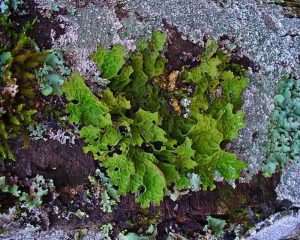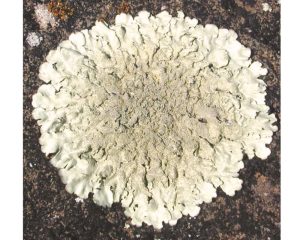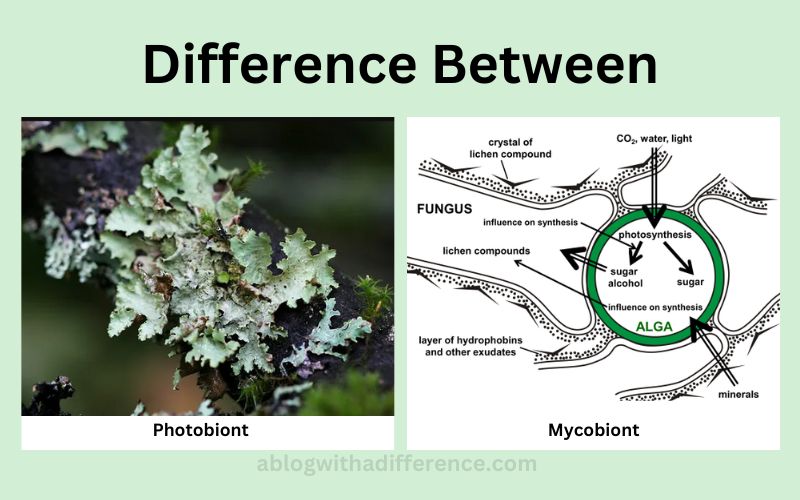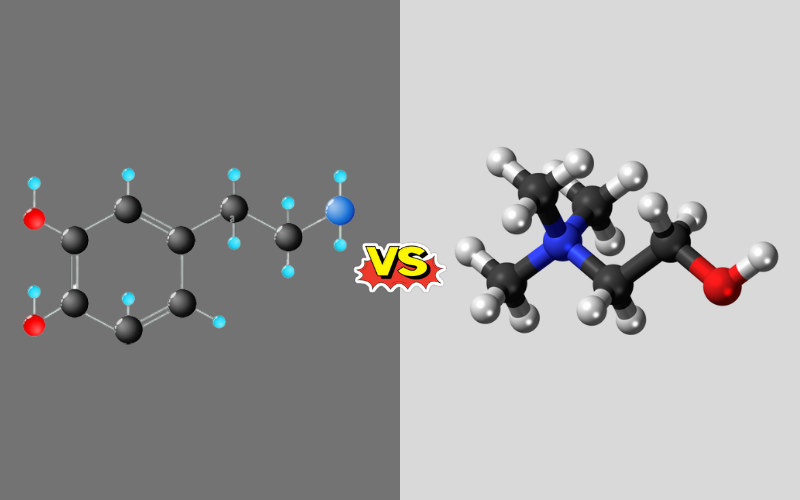Difference Between Photobiont and Mycobiont
A brief introduction to Photobiont and Mycobiont
Photobiont and Mycobiont differ primarily in that Photobiont refers to components of photosynthetic organisms found within lichens such as green alga or cyanobacterium Mycobiont is composed of the fungal components found within lichen an ascomycete or basidiomycete species will typically form Mycobionts.
There are various kinds of symbiotic relationships among living Organisms. Symbioses refer to arrangements between two species that cohabit – for instance, mutualism, parasitism, and commensalism are three forms of these relationships with mutualism being especially advantageous to both parties involved.
Lichens are one of the many mutualistic relationships found between algae/cyanobacterium species and fungal species, in which one side takes responsibility for creating food through photosynthesis while the other supplies water and shelter.
Based on this definition, algae/cyanobacterium are considered photobionts; responsible for photosynthesis. Fungus are considered mycobionts; providing shelter and taking in water.
Importance of photobiont and mycobiont in symbiotic relationships
Photobionts and Mycobionts play an invaluable role in symbiotic relationships between organisms and ecosystems, providing nutrients, oxygen and protection to both parties involved.
Here are a few facts about them which illustrate their significance:
1. Mutualistic Symbiosis: Photobionts and mycobionts form mutualistic symbiotic relationships which benefit both parties involved, improving both species’ lives. These types of mutualism promote survival.
2. Energy Production: Photosynthetic organisms like cyanobacteria, diatoms, and green algae produce energy through photosynthesis. They use sunlight to convert water and carbon dioxide into organic compounds with energy-rich sugars such as glucose which provide fuel for both photobionts and mycobionts alike. This energy source fuels their existence.
3. Carbon Fixation: Through photosynthesis, photobionts help with carbon fixation by taking carbon dioxide out of the atmosphere and converting organic compounds, thus contributing to global carbon cycle and decreasing greenhouse gas emissions.
4. Nutrient Absorption: Mycobionts (typically mushrooms) play an integral part in absorbing nutrients. Their large surface areas and special structures such as their hyphae allow them to efficiently take in and utilize nutrients from soil or substrate, before sharing the benefits with photobionts in turn.
5. Protective and Supportive: Mycobionts provide photobionts with an environment of protection and support. Their fungal structures form an environmental shield to ward off stressors such as desiccation, UV radiation exposure and extreme temperatures; mycobionts additionally assist photobionts by providing nutrients, water retention solutions and anchorage services enabling them to thrive across many environments.
6. Reproduction: Photobionts and mycobionts both reproduce, contributing to the reproduction of their synbiotic relationship. Photobionts can reproduce sexually or asexually, producing new individuals that may colonize and form new symbiotic alliances; Mycobionts create propagules such as spores that aid dispersion while simultaneously encouraging new alliances between organisms.
7. Ecosystem Services: Photobiont-mycobiont relationships provide crucial ecosystem services. Ligniform organisms formed through this union play an essential role in ecological systems; for instance they help improve soil development as well as nitrogen fixation as well as habitat development; they even serve as indicators of air quality!
8. Adaptation to Extreme Environments: Symbiotic relationships between mycobionts and photobionts allow organisms to survive in difficult and harsh environments, like deserts, rocks or even polar regions where neither photobionts nor mycobionts alone could survive alone. Lichens for example can withstand conditions where neither their photobionts nor mycobionts alone would survive alone.
Understanding the significance of mycobiont and photobiont interactions in symbiotic relationships is fundamental for understanding ecosystem dynamics, conserving efforts, and unlocking their potential applications in various areas such as biotechnology, agriculture and environmental protection.
Photobiont
A photobiont organism is defined as any living being that utilizes photosynthesis as its energy source, providing energy to their companion. These relationships form part of mycobionts; you may find photobionts among various kinds of algae or Cyanobacteria.
Photobionts include algae, cyanobacteria and red algae – three well-known varieties with specific cells and pigments to absorb sunlight and convert it to chemical energy via photosynthesis.

Symbiotic relationships provide photobionts with vital resources and energy sources to meet their mycobiont counterparts’ nutritional and energy requirements. Through photosynthesis, photobionts produce organic compounds like carbs that mycobionts use for expansion and survival of their species.
Photobionts play an essential role in carbon dioxide fixation, helping maintain an equilibrium in atmospheric gases. Furthermore, mycobionts use photobionts to defend themselves by producing substances which repel herbivores and pathogens; mycobionts provide suitable environments with essential nutrients necessary for their continued growth and survival.
Lichens are one of the best-known examples of photobiont-mycobiont relationships, boasting complex organisms comprised of an alga or Cyanobacterium photobiont and mycobionts of fungal origin that live together symbiotically to form an iconic and durable organism capable of flourishing in various ecological niches such as deserts and tundra.
Coral reefs rely heavily on symbiotic interactions between photosynthetic organisms (zooxanthellae) and coral animals, especially photobionts that supply energy-rich photobionts which in turn help create their vibrant colors while mycobionts provide support structures to hold up polyps.
Photobionts play an essential role in many symbiotic interactions between plants and photobionts. Some orchids and ferns form mycorrhizal connections with certain fungi which function as photobionts, aiding their absorption of nutrients for development and growth, providing essential support in terms of environmental stability.
Furthermore, photobionts contribute significantly to maintaining ecological sustainability within different ecosystems through various synbiotic relationships that rely on photobionts.
Mycobiont
Mycobionts are organisms made up of fungi with symbiotic relationships with photobionts. Mycobionts play an essential part in these symbiotic relationships that provide various advantages to their companions; among these interactions are mycobionts featuring macroscopic mushrooms as well as microscopic mycorrhizal and endophytic species.
Mycobionts possess unique biochemical processes and structures that enable them to communicate with other photobionts as well as their surroundings. Their special structures such as hyphae enable them to effectively absorb water and nutrients from their environment, breaking down complex organic molecules for absorption into ecosystems through mycobionts that break them down further and aiding with cycle of nutrients in ecosystems. Mycobionts play an essential role in cycling nutrients within an ecosystem.
Mycobiont-photobiont interactions are most frequently seen in lichens. Here, the mycobionts create protective structures which attach themselves to substrate and absorb water; at the same time they take in mineral and nutrient elements from their environment which aid the photobiont in growing and lasting longer in its habitats. Together these entities form an unique symbiotic organism capable of colonizing diverse habitats.
Mycorrhizal relationships provide another example of the mycobiont-photobiont synergy. Mycorrhizal fungi form mutualistic connections within plant roots that improve absorption by increasing available space for absorption of nutrients. Mycobionts extend their hyphae deep into the soil to further expand this absorption capacity.
Mycobionts help plants in obtaining essential nutrients like nitrogen, phosphorus and water while photosynthetic processes produce carbs which aid mycobionts and plants alike in getting what they need for good health and sustenance.
Their relationship benefits both by increasing their ability to access key elements needed for survival – providing mycobionts and plants alike an increase in nutrients while simultaneously benefiting their overall wellbeing.

Endophytic fungi also form associations with other plants, and reside within their tissues without causing any obvious harm. They provide various advantages to host plants including increased resistance against pathogens, resistance against stressors abiotic stressors as well as increased nutrition intake; the mycobionts found within these associations are key elements in maintaining overall plant and ecological health.
Mycobionts play an integral role in maintaining ecosystem function and resilience through their interactions with photobionts, providing structural support, exchanging nutrients for energy use and increasing adaptability and resilience of their companions. Their multiple interactions help maintain ecosystem functions.
Differences between photobionts and mycobionts
Mycobionts and photobionts differ significantly in terms of cell structure, metabolic processes, and reproductive strategies.
Here are the major distinctions:
1. Organelles: Cellular Structure. Photobionts can either be prokaryotic or eukaryotic while Mycobionts tend to be considered eukaryotic Photobionts such as cyanobacteria are prokaryotic species without actual nuclei or membrane-bound organelles, while mycobionts like those primarily found among fungal colonies are considered eukaryotic with real nuclei as well as various membrane-bound organelles residing inside.
2. Metabolic Processes: Photosynthetic processes are defined by their ability to use sunlight to transform water and carbon dioxide into organic compounds with high energy levels through Photosynthesis creating sugars and organic compounds in the process. Mycobionts, on the other hand, are heterotrophic organisms that acquire their nutrition either through the absorption of organic matter or decomposing of organic compounds.
3. Reproduction: Photobionts reproduce through both sexual and asexual means, with sexual reproduction taking place through cell division, fragmentation, or propagule formation whereas sexual reproduction involves union between gametes and special structures to form new gametes that then unite to form special propagules for reproduction. Mycobionts on the other hand usually reproduce by producing spores that disperse through water bodies creating new symbiotic relationships.
4. Function in Symbiotic Relationships: Photobionts play a pivotal role in providing energy sources to their alliance through photosynthesis, which converts light into chemical energy that supplies organic compounds for mycobiont partners to use. Mycobionts serve as fungal partners in the relationship by providing support structures, protecting from environmental stresses, and taking up nutrients from their surroundings.
5. Ecological Functions: Photobionts play an essential role in primary production processes involving carbon fixation and oxygen production via photosynthesis, while Mycobionts provide decomposition and recycling services by decomposing complex organic matter and returning nutrition back into the soil, aiding with soil formation as well as element cycle regulation.
6. Habitat Adaptation: Photosynthetic animals have shown incredible adaption to various habitats, from harsh deserts and areas of polarity hot springs to harsh environments like deserts. Mycobionts also thrive in these extreme conditions – their substrate ranges from tree bark and soil to aquatic environments and rocks.
Understanding their differences helps reveal the different roles and contributions made by mycobionts and photobionts within their symbiotic relationship, creating a mutualistic alliance that improves their survival, resource acquisition, and ecological functions within various ecological systems.
Examples of photobiont-mycobiont relationships
There have been many notable instances of photobiont-mycobiont relationships where the two species form an effective symbiosis.
Here are a few such instances:
1. Lichens: Lichens are composite organisms formed through the mutual interaction of photobiont (typically an algae of green hue or Cyanobacterium) and mycobiont (fungus). Photobionts produce high energy organic compounds through photosynthesis while mycobionts provide structural protection as well as nutrient absorption – together these elements come together to form an array of lichens found throughout various terrestrial habitats such as trees, rocks and soil.
2. Mycorrhizal Associations: Mycorrhizal relationships are synbiotic relationships between mycobionts (mycobionts) and plant roots that are beneficial. Mycobionts form webs of hyphae within or around plant roots to enable exchange of nutrients for plant nourishment.
There are two forms of mycorrhizae relationships; they include Encycorrhizae and Endomycorrhizae; in Encycorrhizae the mycobiont forms a sheath around its host root and extends hyphae to nourish plant nutrients exchange. In Endommycorrhizae the mycobiont forms hyphae between roots for exchange of nourishment exchange, while in Encycorrhizae this type of interaction forms sheath around its host root before sending its hyphae into its host roots which enhance exchange.
Endo mycorrhizae (also referred to as arbuscular mycorrhizae) are relationships in which mycobionts penetrate root cells to form arbuscules – special structures – in which mycobionts live within. These connections allow plants to gain greater access to nutrients while providing mycobionts with an abundant supply of carbohydrates from host plants.
3. Corals: Corals form an intricate relationship with photosynthetic dinosauroflagellates known as Zooxanthellae that act as photobionts. In exchange, corals provide protected environments and sunlight for Zooxanthellae while in turn they provide energy-rich compounds produced through photosynthesis to feed back into coral life and development – this beneficial relationship being critical for their wellbeing and development.
4. Bryophyte-Fungal Associations: Bryophytes and fungi, such as liverworts and mosses, can form mutualistic associations through mycobionts that provide vital nutrients such as nitrogen and phosphorus to bryophytes in return for providing mycobionts a protected environment and access to photosynthetically stable carbon compounds – creating relationships which aid bryophyte growth under low nutrient conditions. These partnerships help increase bryophyte size and existence.
These examples demonstrate the diversity of interactions between mycobionts and photobionts found across diverse ecosystems. Their mutualistic relationship plays a crucial role in maintaining primary production cycles as well as in maintaining various species within these habitats.
Comparison Chart of Photobiont and Mycobiont
Here’s a chart of comparison that highlights the main distinctions between mycobionts and photobionts:
| Aspect | Photobiont | Mycobiont |
|---|---|---|
| Cellular Structure | Eukaryotic or prokaryotic | Usually it is a eukaryotic |
| Metabolic Process | Photosynthesis | Heterotrophic |
| Reproduction | Sexual and asexual | Primarily spores form |
| Role in Symbiosis | Photosynthesis provides energy and helps to create energy. | Give structure and aid in absorption of nutrients |
| Examples | Green algae, cyanobacteria | Fungi |
| Habitat Change | Can adapt to different environments | Can adapt to different environments |
Similarities between photobionts and mycobionts
Although both Photobionts and Mycobionts possess different roles and traits there are some similarities between the two types of Organisms living in symbiotic relationships.
Here are a few similarities:
1. Symbiotic Relations: Both photobionts and mycobionts form mutually beneficial partnerships which benefit both parties involved – contributing to survival and growth for each.
2. Dependence: Mycobionts and photobionts depend on one another to thrive and survive, providing each with energy-rich organic compounds through photosynthesis that mycobionts require for growth and health. Mycobionts in turn provide a protective environment, nutrition absorption, and provide support to photobionts.
3. Interactions Within Lichen Formations: One of the best-known examples of photobiont-mycobiont symbiosis can be seen through the formation of lichens. Lichens are composite organisms composed of Photobionts (usually green algae or cyanobacterium) and Mycobionts (fungus) Photobionts are responsible for photosynthesis while mycobionts provide structure to maintain and support the relationship between organisms.
4. Coexistence of Ecological Systems: Mycobionts and photobionts can be found throughout a range of ecological systems, from forests and woodlands to rocky surfaces, soil, aquatic environments, and aquatic ecosystems. They play a pivotal role in maintaining their respective environments by cycling nutrients back into production as primary producers and creating habitats with specific properties.
5. Adjustments to Environmental Conditions: Mycobionts and photobionts alike have developed adaptations for different environments. They have the capacity to colonize various habitats from harsh desert environments with extreme temperatures to mild ecosystems with moderate temperatures. They thrive and survive across an array of ecological niches.
photobionts and mycobionts share many similarities, yet it is essential to recognize their roles and characteristics in symbiotic relationships. Photobionts specialize in energy production through photosynthesis; mycobionts specialize in nutrient absorption and protection.
Understanding their differences as well as shared characteristics will enable one to better comprehend symbiotic interactions and their ecological significance.
Ecological significance of photobiont-mycobiont relationships
Mycobiont-photobiont relationships are of enormous ecological significance and play an integral part in ecosystem processes.
Here are some key ecological advantages associated with mycobiont-photobiont associations:
1. Primarily Produced: Photosynthetic photobionts transform sunlight to chemical energy through photosynthesis into organic compounds that mycobionts need for survival. In coral and lichen relationships, photobionts provide energy sources that mycobionts then use for reproduction, thus being essential components of primary processes in various ecosystems and food webs.
2. Nutrient Cycling: Mycobionts are key players in nutrient cycling. Mycorrhizal groups especially accelerate this process in ecosystems by taking in and extracting nutrients faster than their plant hosts can. Mycobionts’ ability to do this benefits both mycobionts themselves as well as host plants by increasing availability of essential elements like nitrogen, phosphorus and trace elements that would otherwise remain unavailable – thus contributing towards ecosystem sustainability.
3. Soil Stability and Formation: Mycobiont-photobiont interactions contribute significantly to soil formation and stabilization processes, particularly within lichens where mycobionts form protective structures to increase organic matter and minerals, leading to soil growth over time. Mycorrhizal associations may also aid stabilizing, aggregation, stabilizing water holding capacity as well as nutrient retention – key processes necessary for fertile and healthy soil environments.
4. Habitat Creation: Mycobiont-photobiont associations such as lichens are pioneer organisms which thrive in environments in which other organisms struggle for survival. Lichens can grow on soils, rocks and tree bark forming microhabitats for other organisms by increasing substrate complexity and maintaining moisture. These habitats provide shelter, food sources and microclimates ideal for an assortment of organisms including animals, plants and microorganisms alike.
5. Environmental Resilience: Mutualistic relationships between mycobionts and photobionts help strengthen ecosystems by helping organisms adapt to environmental stressors more easily.
Lichens are well known for thriving in challenging environments like tundra tundras, deserts and rock landscapes; with mycobionts protecting against UV radiation, desiccation, extreme temperatures conditions as well as UV radiation; increasing endurance and resilience within both photobionts as well as mycobionts.
6. Biodiversity and Stability of an Ecosystem: Photobiont-mycobiont interactions promote both biodiversity and stability within an ecosystem. Symbiotic relationships enhance organism diversity by providing unique microhabitats as well as niches for resources. Furthermore, reciprocal interactions between mycobionts and photobionts help ensure stability and efficiency through increasing availability of nutrients, supporting primary production, or altering community dynamics.
Understanding the relationships between photobionts and mycobionts is integral to effectively maintaining and managing ecological ecosystems.
Symbiotic relationships between them play a pivotal role in maintaining healthy ecosystems by increasing productivity and resilience within them, so their protection is vital in upholding biodiversity as well as functioning.
Conclusion
Photobiont and Mycobiont interactions play an essential role in ecosystems, contributing to primary productivity, nutrient recycling, soil development, and habitat creation as well as environmental resilience, biodiversity conservation, and ecological stability.
Synergies among photobionts and mycobionts such as lichens, mycorrhizae, and coral-zooxanthellae illustrate both their interdependencies as well as any benefits that result from these relationships.


